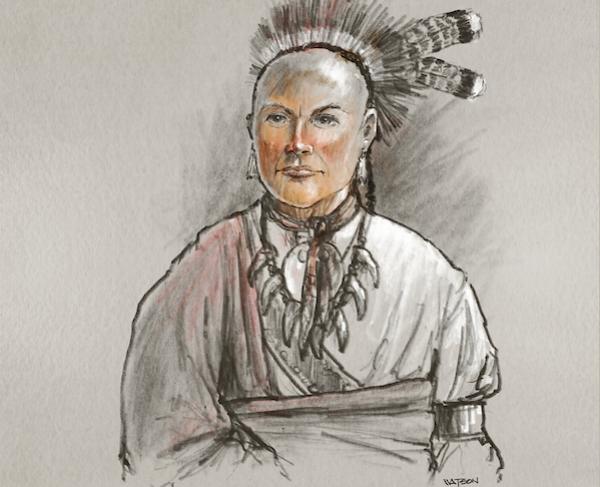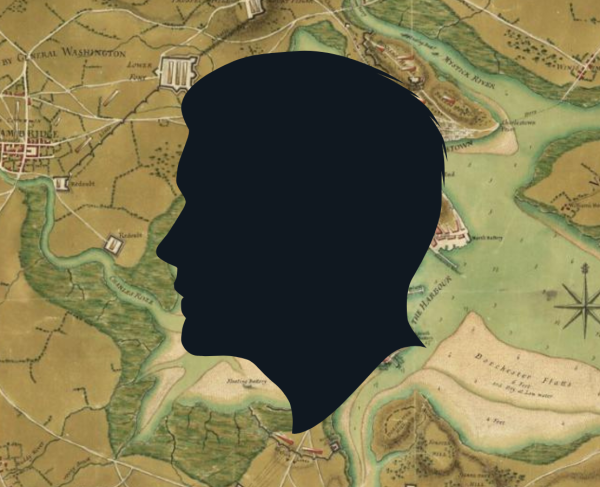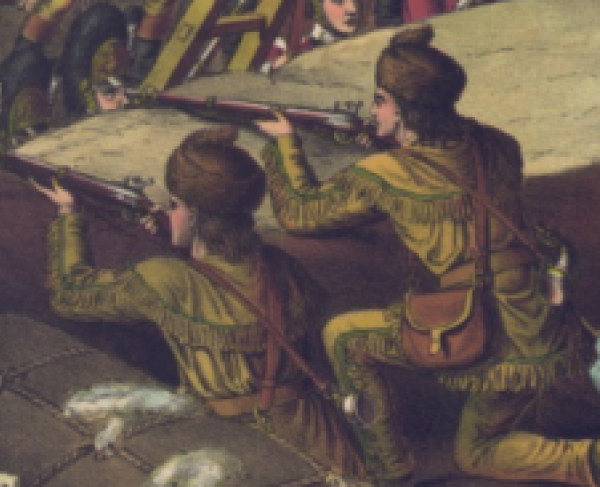Little Turtle
Born in 1752, Little Turtle grew up in Miami villages along the Eel River near the town of Kekionga, modern Fort Wayne, Indiana. The Miamis established prominence through the matrilineal line. Little Turtle’s mother was Mahican and thus he was not slated for leadership as an adult. Little Turtle, however, earned distinction on the battlefield. On November 5, 1780, Little Turtle attacked and summarily defeated a French force bent on the capture of Detroit under Augustine de la Balme near Kekionga.
In the 1783 Treaty of Paris that ended the American Revolution, Great Britain ceded Little Turtle’s homeland to the United States. Congress initiated treaty negotiations with the tribes of the Old Northwest and settlers soon began pouring over the Ohio River. In order to protect the settlers, Brig. Gen. Josiah Harmar launched a campaign from Cincinnati in the autumn of 1790 with the objective of building a fort at Kekionga. Apprised of Harmar’s approach the Miamis and neighboring Shawnees abandoned their towns. Harmar’s lead elements arrived at occupied Kekionga on October 16. Three days later, Harmar dispatched Col. John Hardin toward the Eel River towns. Little Turtle, with about 150 warriors, ambushed Hardin and defeated the Americans before they could reach the river. The victory prompted Harmar to abandon the expedition and he withdrew south as the warriors moved back into Kekionga.
Hoping to salvage his fortunes, Harmar dispatched Capt. John P. Wyllys back to Kekionga on October 22. At a ford along the Maumee River, Little Turtle once again ambushed the Americans putting them to flight and solidifying Harmar’s fate. These victories helped forge an alliance with Blue Jacket, the primary war chief of the Shawnees along with the Chippewa, Delaware, Ottawa, and Potawatomi.
Harmar’s replacement, Maj. Gen. Arthur St. Clair, marched another army north from Cincinnati the following fall. At a bend in the Wabash River on the morning of November 4, 1791, Little Turtle and Blue Jacket attacked St. Clair. The ensuing battle resulted in the worst defeat ever inflicted on the U.S. Army by a Native American force.
In March 1792, President George Washington appointed Anthony Wayne to command and reorganize the army. Unlike his predecessors, Wayne met with success and defeated Little Turtle and Blue Jacket’s confederation at the Battle of Fallen Timbers on August 20, 1794. The engagement convinced the chiefs that further resistance was futile. Wayne invited them to negotiate at Fort Greenville in the spring of 1795. Although Little Turtle objected to the discussions, the two sides agreed to a treaty ending hostilities and giving the United States three quarters of the modern state of Ohio. A couple weeks after the agreement, Little Turtle met privately with Wayne and pledged to live in peace with the United States.
Little Turtle returned home to Kekionga, now occupied by Fort Wayne. In his transition to peace, he became an advocate for the welfare of the Miami. He traveled East and met with President George Washington and later with Presidents John Adams and Thomas Jefferson. Little Turtle received a smallpox inoculation from Dr. Benjamin Rush and became acquainted with the Polish engineer and Revolutionary War veteran, Thaddeus Kosciuszko. He worked closely with the Society of Friends to stamp out alcohol abuse among his people. As relations between the United States and Native Americans spiraled toward conflict once again in 1812, Little Turtle remained an ardent voice for peace. He passed away of gout on July 14, 1812. On July 4, 1914 his grave was accidentally uncovered during a construction project on Lawton Place in Fort Wayne. Among the items found was a pistol presented to Little Turtle by Kosciuszko. One historian remarked Little Turtle was “the greatest of all Miamis and perhaps the greatest Indian who ever lived.”


